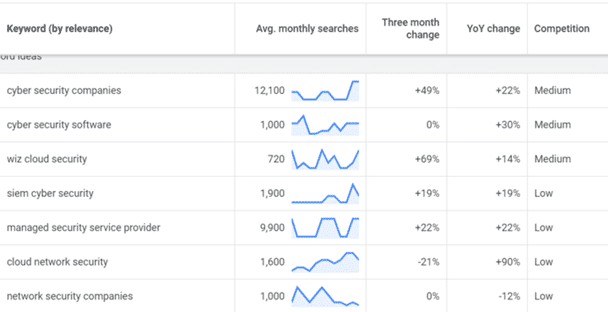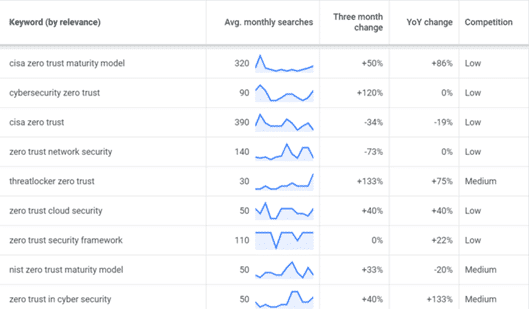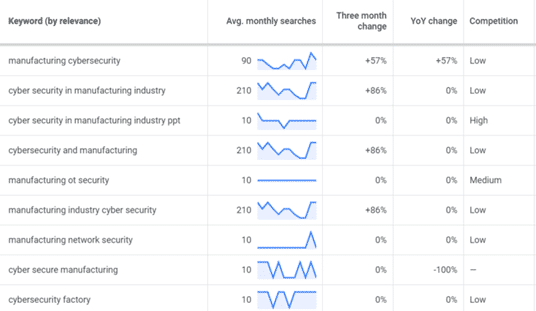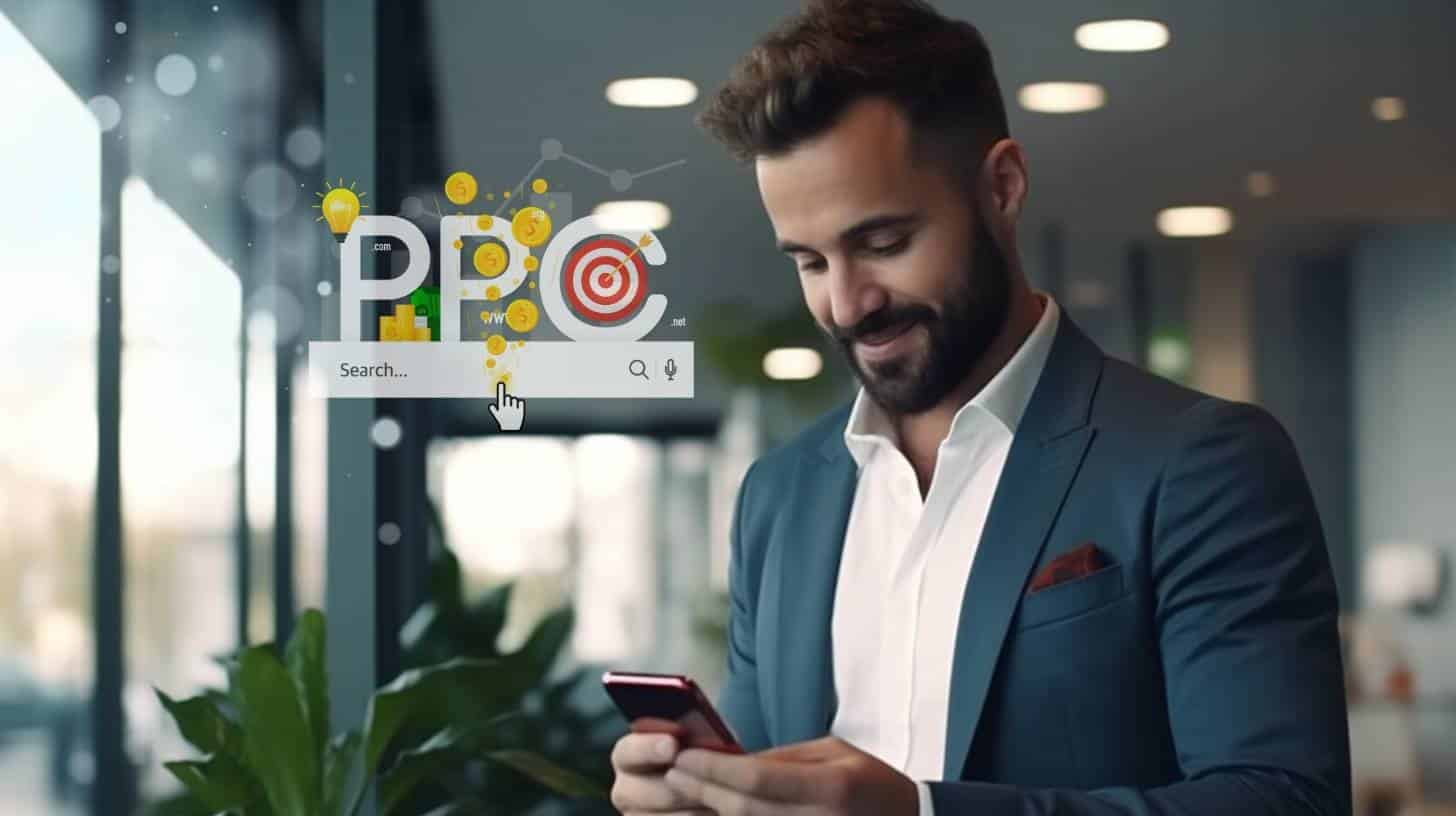PPC continues to hold immense value as a powerful SaaS growth driver. While often associated with consumer markets, PPC is just as effective in B2B, helping to target lower-funnel prospects and build brand awareness. From capturing valuable email contacts to driving qualified leads, a cohesive B2B PPC strategy helps SaaS marketers achieve meaningful results.
Embracing PPC as a key component in your marketing toolkit will lead to successful, scalable outcomes. Consider just a few of the latest stats:
- On average across all industries, businesses make $2 in revenue for every $1 they spend on Google Ads. (Google Economic Impact)
- The traffic that comes from PPC advertising converts 50% better than organic advertising does. (Moz)
- PPC ads contribute to 45% of page clicks in search results. (GrowthScribe)
- PPC generates twice as many website visitors as SEO. (HubSpot)
- The average click-through rate for PPC ads across social media in 2022 was 1.21% (Forbes)
B2B SaaS PPC poses some challenges. While marketers see its value, it can be difficult to identify the right audience, attribute leads to PPC efforts, or prove return on ad spend (ROAS). The cost per lead can be prohibited, especially if PPC is poorly strategized and implemented.

These six tips that have helped us accelerate our PPC for SaaS efforts across all channels that charge by the click – Google, Meta, LinkedIn, Reddit, and more. We’re confident they’ll do the same for you.
1. Understand Your PPC Marketing Landscape
A well-researched PPC approach not only helps you reach potential buyers but also ensures your budget is spent efficiently, engaging people who are most likely to benefit from your product or service. Understanding the PPC marketing landscape means having a clear picture of your audience’s needs, behaviors, and where they spend their time online. For B2B marketers in particular, knowing your audience’s language, search habits, and preferred platforms is necessary to build an effective, targeted strategy.
To explore the importance of understanding your industry and audience, let’s begin by imagining you’re marketing software that helps real estate agents manage their social media presence. These steps will ensure your PPC strategy aligns with your audience’s needs and behaviors, setting the stage for a more effective and resonant B2B marketing approach:
- Research Keywords Carefully: If potential buyers aren’t familiar with your product by name, it’s important to research how they’re actually searching for solutions. For instance, many real estate agents may not realize there’s specific software to improve their social presence. Instead of searching for “real estate social media software,” they’re likely using terms related to their goals, such as “increase social engagement” or “grow online presence.” If you’re marketing a product or service that solves a common problem, but the product name is mostly unknown, you’ll do better by focusing your SaaS keyword research on options related to the problem and its solution.
- Target Awareness Levels: Consider whether your audience is solution-aware, category-aware, or still discovering your product type. If they’re unfamiliar with your product, prioritize keywords that highlight the problem and solution, focusing on categories and specific features they recognize.
- Identify Audience Hangouts: Knowing where real estate agents spend their time online can shape your approach. Tools like SparkToro can provide insights on where your prospects gather, the content they consume, and preferred platforms. Do they connect on Facebook, or do younger members of this demographic spend their time on TikTok? This knowledge enables you to reach them with relevant content in the right spaces.
- Laser-Focus Audience Targeting: A precise audience is critical to PPC success. Build targeted lists, apply negative keywords to filter irrelevant clicks, and experiment with different approaches to refine your reach. This way, you connect with your ideal audience while reducing wasted ad spend.
- Integrate Your CRM into PPC for Better Retargeting: Retargeting is a PPC strategy that displays ads to users who have previously interacted with your ad but didn’t convert the first time they saw your offer. They might have watched a video or visited your website but failed to complete a desired action like filling out a form or making a purchase. By integrating your CRM with PPC channels, you can leverage retargeting to engage prospects who have previously shown interest. Use your CRM data to push specific audiences into Google Ads, offering more tailored signals and helping you re-engage with precision.
2. Prioritize Relevance Over Volume
Now let’s move to another example. Let’s say that you are part of a company that provides cybersecurity solutions for businesses. Everyone with a computer needs to be mindful of cybersecurity, so there are a huge number of potential buyers, yet many of them are not the buyers you want to target. Since you’re in the B2B arena, you need a B2B PPC strategy that targets businesses rather than individual consumers.
Understanding that, it’s easy to see how important it is to emphasize relevance of keywords over volume. Consider this short list of keywords:

Now compare it to the following lists:


Some marketers might be misled into chasing the keywords in the first list. After all, each has many monthly searches, while the keywords on the second and third lists include some that barely break 100 monthly searches.
But PPC for B2B is as much an art as it is a science. By carefully considering the keywords on the second list, you’ll see that, despite the low volume, these terms are highly relevant. While more people might be searching for “cybersecurity software,” there’s a far higher likelihood that someone searching for “zero trust network security” or “manufacturing network security” has a problem for which they need your immediate solution. That person is more likely to match your solution and have higher intent.
3. Spy on (and Steal Traffic From!) the Competition
Your competitors are a great source for keyword ideas and ad copy inspiration. You can check out your competitor’s ads (and your own) using the tools below.
You can use the Google Ad Preview and Diagnosis Tool to view your own ads as they appear in real Google search results. While the tool has been designed for previewing your ads, it indirectly helps you understand market trends and keyword competitiveness. By entering keywords relevant to your industry, you can observe which competitors appear in the ad space, the types of messages they use, and how they position their offerings.
Like Google’s Preview Tool, platforms such as SEMRush or SpyFu are great options to help you get a better understanding of what your competitors are doing and which paid ad channels they are targeting with their B2B PPC strategy. With a little research into the marketplace, you’ll be more informed about where to start or which direction to take. That research will help you narrow your focus and find a less competitive niche within your space.
4. Use Negative Keywords
PPC is an investment and, as you would for any other investment, you should reduce any unnecessary expense. One way to do that is with negative keywords. Google says, “Negative keywords let you exclude search terms from your campaigns and help you focus on only the keywords that matter to your customers.”
Negative keywords will help you optimize your ad spend. To show you how, let’s return to our cybersecurity example and apply the concept of negative keywords. Think of it like this: Every company needs to harden their network, but not every one of those organizations is a bank. If your product were built to meet the specific needs of financial service providers, you’d want to rule out buyers who were searching for a cybersecurity solution built for the manufacturing or insurance industries.
By building out a negative keyword list, you’ll save yourself money while also driving relevant traffic that is more likely to convert with a more effective B2B PPC strategy.
5. Amplify Your B2B PPC Strategy and Complement Search Ads with Social Media
While Google and Bing Ads are effective for capturing high-intent search traffic, they can also be costly and aren’t always suited for every stage of the B2B buyer’s journey. While search queries do indicate purchasing intent, many users are still early in their decision-making process—especially in B2B contexts, where multiple decision-makers and longer sales cycles often come into play. Few prospects are immediately ready to commit to a demo or a 30-minute meeting. For any B2B SaaS strategy to be effective, social media marketing tactics must play a crucial role. Social platforms allow you to target top-of-funnel audiences with engaging, awareness-driving content and nurture them down the funnel with more specific offers and retargeting tactics.
Social Media Targeting for Every Stage of the Funnel
A cohesive, multi-touchpoint strategy that targets both ends of the funnel on social media will resonate with users at every stage of their buying process. By using social media ads in conjunction with search and display, you can create a well-rounded, cost-effective PPC strategy that reaches users wherever they are in their buying journey, offering the right content at the right time to drive engagement and conversions.
For top-of-the-funnel efforts, social media platforms like LinkedIn, Facebook, and Instagram enable you to reach broader audiences based on interests, industry, or behaviors. This allows you to introduce your brand with relevant resources such as eBooks, guides, or industry insights that cater to prospects still in the research phase. Testing content types like video ads, carousels, and interactive posts can also help increase engagement and educate potential customers in a format they find appealing.
As users move further down the funnel, retargeting features on social platforms allow you to reconnect with those who have interacted with your brand, offering them tailored content to nurture their journey. This could include case studies, testimonials, or product-specific content aimed at guiding them toward conversion actions like demos or consultations.
Gain Competitive Insights through Social Media Ad Libraries
Just as with search ads, gaining insights into competitors’ social media strategies can be invaluable. Resources like the LinkedIn Ad Library and Facebook Ad Library allow you to view active ads from competing companies, giving you a window into their messaging, target audiences, and creative strategies. Observing your competition’s approach to audience segmentation, engagement tactics, and ad formats can help you identify trends, differentiate your messaging, and refine your B2B PPC approach across channels.
Experiment Beyond LinkedIn to Maximize Social Media Impact
While LinkedIn is a go-to for B2B advertising, exploring other platforms can help reach a wider audience. Depending on where your target market spends time, consider leveraging platforms like Facebook, Instagram, and even spaces like Reddit, X (formerly Twitter), or Threads. TikTok is increasingly popular as video continues to dominate user preferences and ad spend. See trending accounts and more here. Explore top TikTok ads here.
Extend Your PPC Reach with Google PMAX Campaigns
For an even broader approach, consider using Google PMAX campaigns alongside traditional search ads and social PPC. PMAX allows your ads to appear across Google’s entire suite of channels, from YouTube and Gmail to Discover and Maps, providing additional visibility beyond keyword-based targeting. This multi-channel strategy can complement your social media PPC efforts, ensuring your brand is present throughout the entire digital journey.

6. Optimize Landing Pages for Conversion
Make sure your PPC ads link to well-designed, relevant landing pages that seamlessly guide visitors toward conversion. An optimized landing page keeps prospects engaged and encourages them to take the next step.
- Coordinate Ad Messaging and Landing Page Content: Align landing page copy closely with the message and promise in your ad, so visitors find exactly what they expect. Keep the tone in line with the PPC channel you’ve used for your ads. Conversations on Facebook or LinkedIn sound different from the chatter on Reddit or TikTok.
- Use Clear, Compelling Headlines: Start with attention-grabbing headlines that reinforce the ad’s value proposition and keep visitors interested.
- Showcase Social Proof and Testimonials: Include reviews or testimonials to build credibility and encourage trust.
- Add Visuals and Graphics: Incorporate high-quality images to enhance the user experience and keep visitors engaged.
- Craft a Strong Call to Action: Direct users toward the desired action with a clear, persuasive CTA.
- Keep Forms Simple and Relevant: Shorten and streamline forms to make conversion easy, asking only for essential information.
- Optimize for Mobile: Ensure your page is responsive and easy to navigate on mobile devices to capture all potential leads.
- Test and Refine Regularly: Continuously test and adjust page elements to improve performance and optimize conversion rates over time.
A Final Word on B2B PPC Strategy
As we mentioned, being successful with PPC for B2B is as much an art as it is a science. No matter how well thought-out your B2B PPC campaigns are, they’ll require some future tweaks. The greatest favor you can do yourself as a digital marketer making your way with PPC is to keep an open mind and learn from everything you do by continuing to monitor your campaigns, compare your results to SaaS marketing benchmarks, and then optimize your campaigns based on what you learn.
Are you looking for a marketing partner with the skills to create and implement a comprehensive B2B PPC strategy? Bay Leaf Digital’s team of experienced professionals includes experts in PPC, SEO, content marketing, and much more. Contact us and schedule a conversation to learn how we can help your business thrive, often for less than the cost of adding just a single marketer to your staff.


